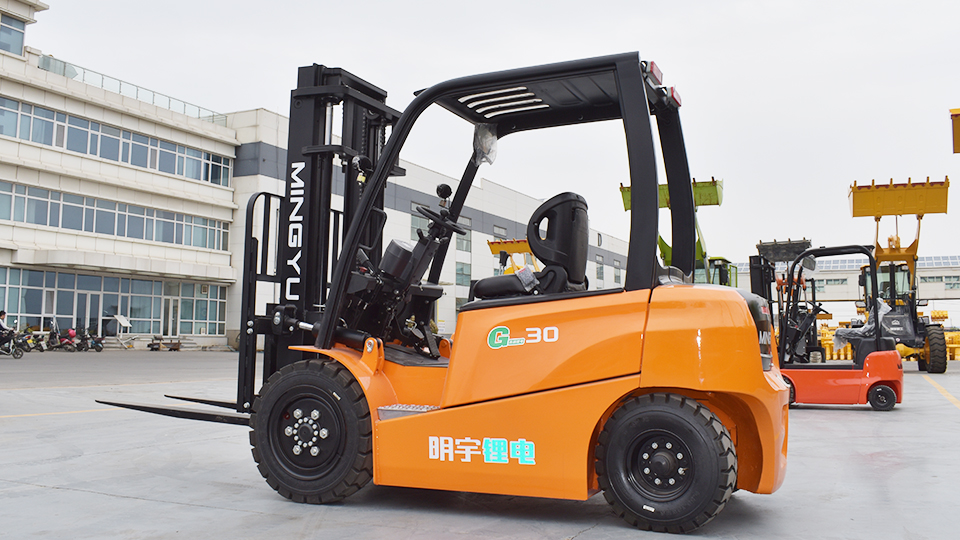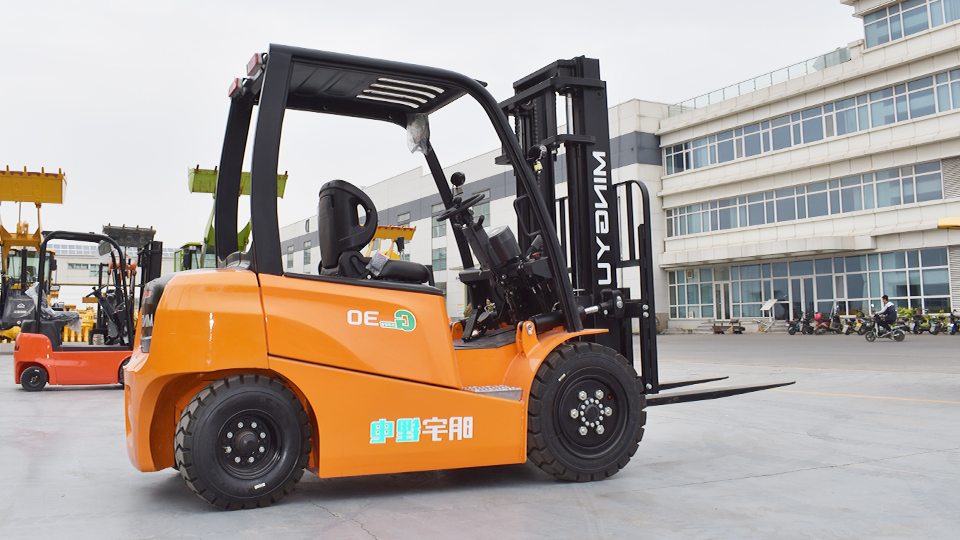
In the world of logistics, construction, and manufacturing, forklifts are the unsung heroes. These powerful machines are responsible for the smooth and efficient movement of goods, making them a critical component of countless operations. Given their central role and the potential for serious accidents, the question of operator qualification is paramount. A common misconception, however, is that all you need is a "license" to drive a forklift, similar to a car.
The Misleading "Forklift License"
The term "forklift license" is a major source of confusion. While it's used colloquially, it's not a formal, government-issued credential in the same way a driver's license is. A state-issued driver's license is a public authorization to operate a vehicle on a public road, certifying a basic understanding of traffic laws and the ability to maneuver a car. A forklift, on the other hand, is a piece of industrial equipment, and its safe operation is governed by workplace safety standards, not highway traffic laws.
The proper term for the authorization to operate a forklift is "forklift certification." This distinction is not just semantic; it's the core of the regulatory framework and the foundation of a safe workplace.

The Definitive Authority: OSHA Regulations
In the United States, all requirements for operating powered industrial trucks are outlined in the OSHA standard 29 CFR 1910.178. This standard clearly states that only trained and certified operators are permitted to operate these machines. The responsibility for this training and certification falls squarely on the employer.
OSHA's regulation does not require a standard driver's license for forklift operation. Instead, it mandates a specific, three-part training and evaluation process to ensure an operator's competency. This process is designed to address the unique hazards and operational characteristics of forklifts, which are fundamentally different from those of an automobile.
The Three Components of Proper Certification
To become a certified forklift operator, an individual must successfully complete a program that includes:
Formal Instruction: This is the theoretical, knowledge-based part of the training. It can be delivered through a variety of methods, including lectures, videos, online courses, and written materials. The formal instruction must cover a wide range of topics, including:
Truck-Related Topics: This includes the operating instructions, warnings, and precautions for the specific type of forklift being used. It also covers the differences between a forklift and a car, the location and function of all controls, the truck's stability and load capacity, and the inspection and maintenance the operator will be required to perform.
Workplace-Related Topics: This section is crucial and makes the certification workplace-specific. It addresses the unique hazards and conditions of the worksite, such as:
Surface conditions (slopes, ramps, uneven floors).
The composition and stability of the loads to be handled.
Pedestrian traffic and other vehicles in the area.
The layout of the facility, including narrow aisles and overhead clearance.
Operating in hazardous locations or enclosed environments where ventilation is a concern.
Practical Training: After completing the formal instruction, the trainee must receive hands-on, practical training. This involves a qualified trainer demonstrating the correct and safe operating procedures, followed by the trainee performing practical exercises under the trainer's direct supervision. This is where the operator develops the muscle memory and feel for the machine. The practical training must include:
Pre-shift inspections and proper startup procedures.
Maneuvering the forklift in a way that simulates real-world conditions.
Picking up, transporting, and stacking various loads.
Safe braking and stopping practices.
Refueling or battery charging procedures.
Performance Evaluation: The final and most critical step is the performance evaluation. A qualified person, often the trainer or a designated supervisor, must observe the operator in the workplace to ensure they can safely and competently apply all the skills and knowledge they have learned. This evaluation is the official verification that the operator is qualified to operate a forklift in that specific environment. The employer is then required to "certify" that the operator has been trained and evaluated, and to keep a record of this certification.
Why a Driver's License Is Not Enough
A standard driver's license simply does not provide the specific knowledge and skills required for safe forklift operation. Here’s a detailed breakdown of why a car license is insufficient:
Steering: A car steers from the front wheels. Most forklifts, particularly counterbalanced models, steer from the rear wheels. This fundamental difference requires a completely different approach to maneuvering, particularly when making turns in tight spaces. An untrained operator may not account for the rear-end swing, leading to collisions with racks, walls, or other people.
Stability: A car's center of gravity is low and within its wheelbase. A forklift's center of gravity is highly dynamic and shifts with the load. The "stability triangle" is a core concept in forklift training that every operator must understand. Overloading a forklift or raising a load with the mast tilted forward can easily cause it to tip over, a catastrophic and often fatal accident. A car driver has no training in this concept.

Weight and Power: Forklifts are immensely powerful machines designed to lift thousands of pounds. Their weight and power, combined with their dynamic center of gravity, make them incredibly dangerous in the hands of an untrained operator. A forklift's braking distance, for example, is far greater than a car's.
Operational Environment: Forklifts operate in a hazardous environment filled with other machinery, pedestrians, and tight spaces. The rules of the road—such as traffic lights and stop signs—do not apply. Instead, operators must follow specific workplace safety protocols, which are a major part of the certification training.
The Consequences of Non-Compliance
Operating a forklift without proper certification is a serious violation of the law. The consequences for both the operator and the employer can be severe.
For the Operator: An untrained operator is at a much higher risk of causing an accident, which could lead to serious injury or death for themselves or a coworker. Furthermore, a non-certified operator could face legal action and be barred from employment in any position that requires forklift operation.
For the Employer: This is where the legal and financial penalties are most significant. If an employer allows an uncertified operator to drive a forklift, they are in direct violation of OSHA regulations. This can result in:
Substantial Fines: OSHA can issue fines that run into the tens or even hundreds of thousands of dollars for a serious violation.
Increased Liability: In the event of an accident, the employer's liability increases exponentially. They could face costly lawsuits, workers' compensation claims, and even criminal charges if negligence is proven.
Damage to Reputation: A safety violation can tarnish a company's reputation, making it difficult to attract and retain talent and business.
The Importance of Refresher Training
Forklift certification is not a one-time event. OSHA requires a performance evaluation at least once every three years. Refresher training is also mandatory under certain circumstances, such as:
When an operator is observed operating the forklift unsafely.
When an operator is involved in an accident or a near-miss incident.
When there is a change in the type of equipment or the workplace environment that could affect safe operation.
This cyclical approach to training ensures that operators' skills and knowledge remain current and that they are prepared to adapt to new situations.
The Age Requirement: A Universal Standard
One final, non-negotiable requirement is age. Regardless of a person's experience or training, OSHA mandates that a person must be at least 18 years old to operate a forklift. This is a strict rule with no exceptions, put in place to ensure the safety of young workers and those around them.
Conclusion: Certification is a Mandate, Not a Choice
To definitively answer the question, "Do you just need a license to drive a forklift?" the answer is a resounding no. A standard driver's license is entirely separate from, and cannot be substituted for, the proper forklift certification.
Forklift certification is a legal and ethical mandate born out of a clear understanding of the risks associated with these powerful machines. It is a multi-step process that combines theoretical knowledge with practical, hands-on training and a final performance evaluation. This comprehensive approach is designed to produce a competent, safety-conscious operator who understands the unique physics of the machine, the specific hazards of the worksite, and the importance of adhering to safety protocols.
For an individual, earning a forklift certification is a valuable investment in their professional development and personal safety. For an employer, providing this training is not just a regulatory obligation; it is a fundamental duty to their employees and a critical component of a safe, productive, and legally compliant operation.
Name: selena
Mobile:+86-13176910558
Tel:+86-0535-2090977
Whatsapp:8613181602336
Email:vip@mingyuforklift.com
Add:Xiaqiu Town, Laizhou, Yantai City, Shandong Province, China